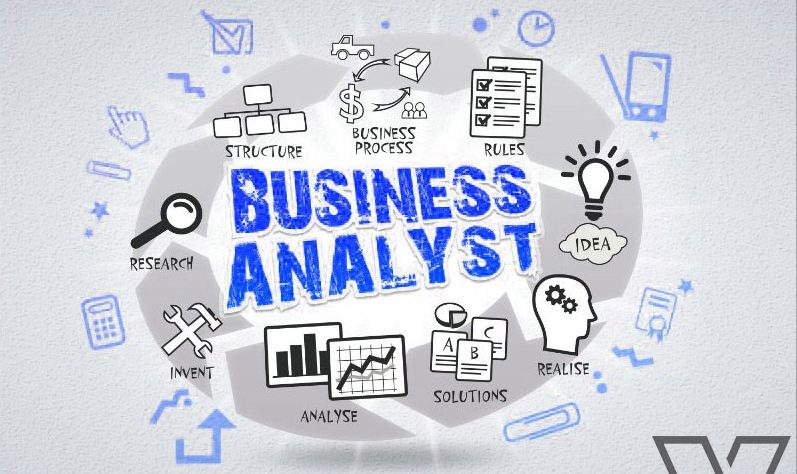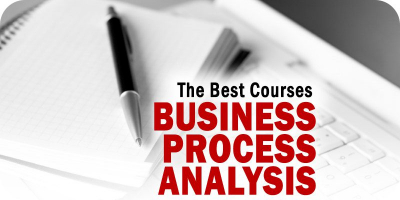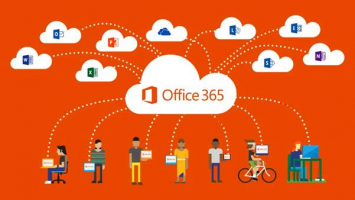Top 13 Best Online Business Analysis Courses
Business analysis is a subject that focuses on recognizing business needs and finding solutions to difficulties. A software-systems development component is ... read more...common, but solutions might also involve process improvements, organizational change, strategic planning, and policy development. A business analyst, or BA, is the individual who does this role. To achieve these skills, people must hone and learn constantly. For that reason, Toplist has compiled a list of the best online Business Analysis courses which help you improve this skill.
-
Process Flowcharts, SWOT Analysis, Use Cases, User Stories, Stakeholder Maps, RACI Matrices, Scoring Matrices, and Organizational Charts are the eight most used modeling techniques in the business, and this course will teach you the fundamentals of each.
The TEACH, SHOW, DO strategy is used in this course, which the authors developed over their years of experience in the industry educating and managing Business Analysts. This method will ensure that you fully comprehend the subject at hand and retain the most information possible long after the course is completed.
You'll get access to modeling templates that you can download and use for current and future projects, in addition to learning the principles of these eight modeling techniques. You'll gain a foot into the market by way of an industry expert, in addition to all the tools you'll need to master and use these modeling methodologies...
By the end of this course, you'll have a firm grasp on the fundamentals of the eight most popular modeling techniques, allowing you to easily explain complex concepts to anyone, regardless of their role or prior knowledge of the subject. This is one of the best online Business Analysis courses.
Enrolling in the course gives you unlimited access to all lectures, activities, handouts, and quizzes for the rest of your life. In addition, you will receive assistance with any questions or concerns you may have. All of this is backed by a money-back guarantee. You've got nothing to lose and everything to gain.What you will learn
- Create EIGHT visual models, including Process Flowcharts, Use Cases, SWOT Analysis, RACI Matrix, Organization Charts, Scoring Matrix, Stakeholder Maps, and more.
- Learn how visual modeling can assist you with your daily requirements.
- Reading and creating crucial commercial and technical visual models is a must.
- Visual modeling can be used to bring requirements to life.
- Ability to select the most appropriate visual model for a given situation.
- Give your stakeholders a better knowledge of your vision to help your project succeed.
- In an interview, confidently describe and illustrate the use of visual models.
Who this course is for
- Aspiring Business Analysts looking to improve their chances of landing a job as a Business Analyst.
- Current Business Analysts who want to provide more value to their projects and make them more successful in general.
- Anyone who analyzes, elicits, or documents requirements is a requirement analyst.
- Developers that wish to learn more about visual models and be able to design them.
Requirements
- From the ground up, this course covers every visual modeling approach. It is not necessary to have any prior experience.
- The course is presented from the perspective of a Business Analyst, although the visual models are useful for a variety of job titles.
- Microsoft Excel and Microsoft Visio will be used to create the various visual models. It is recommended, but not needed, that you have access to these programs.
Instructor: Jeremy Aschenbrenner
Udemy rate: 4.6/5.0 (8,521 ratings)
Enroll here: https://www.udemy.com/course/visual-modeling-master-class/

https://pestleanalysis.com/ 
https://pestleanalysis.com/ -
Business analysts are change agents. These professionals are inquisitive and want to learn about other people's perspectives so they can develop action plans to solve problems and seize opportunities.
You'll lay a strong foundation for your job and responsibilities in this business analysis introductory course. This course will introduce you to the fundamentals of:
- Business analysis
- Enterprise analysis
- Planning and monitoring requirements
- Requirements elicitation
- Requirements analysis
- 3.5 PDUs for Strategic and Business Management
You're aware that projects are one-time endeavors aimed at creating something unique. However, before a project can begin, it must first have a clear set of project requirements, which is where the BA comes in. The BA gathers the requirements to address a problem or grab an opportunity, while the project manager manages the project. Projects should only begin when the BA has thoroughly investigated the scenario, assessed the business value, and developed a set of requirements for the organization to evaluate. It's difficult to have a successful project without good specifications.
This is a wonderful place to start if you're new to business analysis, project management, or have been assigned with gathering requirements and identifying stakeholders. This course will swiftly go through the fundamentals of analysis so that you can put what you've learned into practice and get things done. Project managers, project teams, and new business analysts will benefit from this course. It's a snap. It's straightforward. It's also jam-packed with information.Instructor: Joseph Phillips
Udemy rate: 4.6/5.0 (334 ratings)
Enroll here: https://www.udemy.com/course/business_analysis/

https://inda.vn/ 
https://www.springboard.com/ -
The CBAP course equips you with the knowledge and abilities necessary to be a skilled business analyst, allowing you to pass the IIBA–CBAP test on your first attempt.
Business analysis is used to discover and express the need for change in how organizations operate, as well as to help organizations implement that change. The instructors identify and design solutions that will optimize the value given by a firm to its stakeholders as business analysts. Business analysts work at all levels of an organization, and their responsibilities range from defining strategy to developing enterprise architecture to taking a leadership role in defining program and project goals and requirements, as well as supporting continuous improvement in the organization's technology and processes.
The instructors have the necessary knowledge to function as a guide and take the company through uncharted area to its intended destination. The usefulness of business analysis is in the realization of benefits, cost avoidance, new opportunity identification, understanding of essential competencies, and organization modeling. The instructors may ensure that a firm receives these benefits by effectively using business analysis, thereby enhancing the way they do business.
The IIBA CBAP is the most popular business analysis course in the world. This certification will assist you in developing expertise in the six BABOK-3 knowledge areas: business analysis planning and monitoring, elicitation and collaboration, requirements life-cycle management, enterprise analysis, requirements analysis and design definition, as well as solution evaluation.What you will learn
- In the First Attempt, Pass the IIBA-CBAP Certification Exam
- Identify organizational needs, provide recommendations, and evaluate solutions
- Become recognized as a senior member of the BA community with a deep comprehension of the BABOK's six knowledge areas 3
Who this course is for
- Business Analysts
- Aspiring BAs with some years of experience
- Senior Analysis Professionals
- Project Managers
- Associate/Asst. Manager - Projects
- Team leads/Managers
- Project Executives/Engineers
- Software Developers
- Any professional aspiring to be a Business Analyst
Instructor: Ciel Academy
Udemy rate: 4.6/5.0 (33 ratings)
Enroll here: https://www.udemy.com/course/certified-business-analysis-professional/

https://news.umanitoba.ca/ 
https://www.businessessentials.co.za/ -
The teachers have condensed all they've learned during their years in the field into a thorough guide to the fundamental aspects that make up the most crucial item in any Business Analyst's toolbox – your foundational knowledge – in this course.
It is hard to build a prosperous future without a solid foundation. But having one in place will give your career the best possible start and position you to take full advantage of the opportunities and experiences that come your way, allowing you to reach the success you've always wanted!
So, whether you're a seasoned Business Analyst or just starting out, let this course be the first step toward a rewarding and fulfilling career. Enrolling in the course gives you unlimited access to all lectures, activities, handouts, and quizzes for the rest of your life. In addition, you'll get one-on-one help with any questions or concerns you may have. All of this is backed by a money-back guarantee. You've got nothing to lose and everything to gain.
What exactly is included in this course?
- Learn the fundamentals of business analysis, including who a business analyst is, what they do, and how they do it.
- Six project techniques are broken down, including standard Waterfall and Agile frameworks.
- Learn how to effectively kick off a project by creating a business case that is aligned with the company's goals.
- Learn the fundamentals of project requirements and six popular approaches for eliciting them from your stakeholders.
- Gain an understanding of numerous modeling diagrams to aid in the recognition and comprehension of project documentation.
- Perform requirement specification, which includes categorizing, deriving (breaking down), prioritizing, and validating requirements.
What you will learn
- Learn the fundamentals of business analysis, including who a business analyst is, what they do, and how they do it.
- Six project techniques are broken down, including standard Waterfall and Agile frameworks.
- Learn how to effectively kick off a project by developing a business case that is aligned with the company's goals.
- Learn the fundamentals of project requirements and six popular approaches for eliciting them from your stakeholders.
- Gain an understanding of numerous modeling diagrams to aid in the recognition and comprehension of project documentation.
- Perform requirement specification, which includes categorizing, deriving (breaking down), prioritizing, and validating requirements.
- Have the confidence to arrange requirements approval meetings with ease.
Who this course is for
- Aspiring Business Analysts, such as fresh college grads and those wishing to change careers.
- New Business Analysts who want to learn more about their profession
- Administrators, managers, and project leads are examples of positions that perform business analysis.
- This course qualifies for 9 hours of Professional Development for those pursuing their ECBA certification.
Instructor: Jeremy Aschenbrenner
Udemy rate: 4.5/5.0 (37,652 ratings)
Enroll here: https://www.udemy.com/course/business-analysis-ba/

https://pulse.microsoft.com/ 
https://www.bizdata.com.au/ -
The benefits of process visualization for the business community, the Business Analyst or Product Owner, those tasked with developing the solution, and ultimately the entire organization will be covered in this course - Business Analysis: Data Flow Diagrams to Visualize Workflows.
You'll also learn how to use DFDs to identify and solve some of the most common issues that plague IT projects, such as scope creep, project overruns, and missing or misunderstood requirements.
"Data Flow Diagrams to Visualize Workflows – Simply Put!" says the author of "Business Analysis: Data Flow Diagrams to Visualize Workflows – Simply Put!" uses a concrete business scenario to demonstrate a basic, easy-to-learn way to creating and analyzing Data Flow Diagrams representing workflow and data modification utilizing interviews with domain experts.
You'll learn how to design a Context-Level Data Flow Diagram and explode relevant process(es) to disclose the nitty-gritty detail (i.e., individual process and data specifications) that developers need to create IT solutions that meet the needs of the business community.
The course also teaches you how to perform workflow analysis with a DFD that generates Requirements, User Stories, Features, Scenarios, or whatever other mode you choose to define desired business outcomes for software products.What you will learn
- To begin business process analysis, document existing business processes and workflows in Data Flow Diagrams (DFD).
- Justify the use of data flow diagrams, context diagrams, and detailed physical process models.
- Use the appropriate symbols for each type of diagram to ensure that everyone understands it.
- To uncover underlying processes and procedures, dissect a high-level Data Flow Diagram to its lower-level details.
- To identify lacking processes and avoid late project modification requests, balance DFDs.
- Horizontal Balancing can be used to find missing data and reduce redundancy.
- To assist solution providers, document process specifications for functional primitives.
- Metadata is used to provide information that developers will need to build the solution.
- Use workflow analysis approaches to figure out what's causing business problems, time issues, and error/exception handling processes.
- Use the findings of the process analysis to elicit requirements, user stories, scenarios, and features, among other things.
Who this course is for
- Business Analysts
- Subject Matter Experts
- Agile Product Owners
- Project Leaders and Managers
- Line Managers
- Systems Analysts
- Software Testers
- Business Architects
- AND "anyone wearing the business analysis hat"
Requirements
- There is no need for a technical background.
- In a user story or requirement workshop, you'll need to lead a group of stakeholders through workflow analysis.
- Desire to present, analyze, and improve one or more workflows or business processes
- Business analysis has piqued my interest.
- There are no additional items necessary.
Instructor: Tom and Angela Hathaway
Udemy rate: 4.5/5.0 (2,092 ratings)
Enroll here: https://www.udemy.com/course/data-flow-diagrams-simply-put/

https://www.northeastern.edu/ 
https://builtin.com/ -
Use business analysis tools to devise and recommend the most effective strategies and solutions for achieving your organization's objectives. When a company has a huge concept but doesn't know how to make it a reality, it's your job as a Business Analyst to help them bridge the gap...
This course will walk you through the 5-Step Strategy Analysis Process
- Analyze the Current Situation - Discover how to figure out where your company stands right now so you can move forward completely equipped.
- Define the Future State - Know exactly how to define what a "successful result" is — in order to succeed, you must first know what success looks like.
- Assess the Risks - Avoid potential stumbling blocks and traps by identifying them early and factoring them into your preparation.
- Decide on a Change Plan – Learn how to weigh all of your options and decide which to suggest, then devise a strategy for implementing the change.
- Make a business case for yourself – Document all of the previous parts in a convincing and consistent manner so that you can continue forward with the project.
You'll master the strategies, tools, and skills in each stage through the use of practical, real-world examples, so you'll not only comprehend the 5 phases, but also know how to put them into practice.
Enrolling in the course gives you unlimited access to all lectures, activities, handouts, and quizzes for the rest of your life. In addition, you'll get one-on-one help with any questions or concerns you may have. All of this is backed by a money-back guarantee. You've got nothing to lose and everything to gain.This is one of the best online Business Analysis courses. You'll learn how to examine an organization's circumstances and then offer the best tactics to assist them bring their "big idea" from vision to reality by the end of this course. So, if you want the prestige of being able to declare you're a Business Analyst who can assist firms in achieving their objectives, join today.
What you will learn
- Learn how to assess and analyze an organization's existing state (as-is) to obtain a clear sense of its structure, culture, and capabilities.
- Learn how to define project success appropriately by outlining the conditions that must be met in the future state (to-be)
- Learn how to use gap analysis to identify the changes that are required to move the organization from its current state to its desired future state.
- Learn how to identify, assess, and manage project and organizational risks using brainstorming and workshop methodologies.
- Learn how to identify feasible options and offer the best solution to satisfy the needs of the business and close the gap that has been found.
Who this course is for
- Aspiring or current Business Analysts
- Aspiring or current Project Managers
- Business professionals who are tasked with determining the best way to affect change within their organization
- Business professionals who are tasked with assessing and mitigating risks of changes within their organization
Requirements
- No Business Analysis experience necessary, but it is recommended (not required) that you have taken the first course in the Business Analysis Process Series, "Identify and Define the Problem"
Instructor: Jeremy Aschenbrenner
Udemy rate: 4.5/5.0 (2,896 ratings)
Enroll here: https://www.udemy.com/course/business-analysis-conduct-a-strategy-analysis/

https://enterprisetalk.com/ 
https://www.forbes.com/ -
In this course, you'll learn the principles of business analysis and obtain a true understanding of what a business analyst is and what they do. The foundations of business analysis tools and techniques will be covered in this course. You'll learn how to use these talents as a business analyst to gather requirements and find solutions to improve business outcomes. Learn the important concepts, vocabulary, and stakeholders that business analysts must be familiar with in order to operate effectively.
The BABOK® Guide will next be introduced to you. You must have a thorough understanding of business analysis essential ideas in order to be successful in your business analysis career and pass any of the business analysis certification exams.
You'll master the fundamental skills you'll need to deliver successful solutions and pass professional business analysis certification exams. You'll discover how to use the BABOK as a valuable resource.
Finally, you will be introduced to CBAP® (Certified Business Analysis Professional®) and learn how to obtain this useful certification and use it in your professional career. This course will lead you through the CBAP Examination application process and how to best approach it. After that, you'll learn how to prepare for the CBAP Exam in the most effective way possible. This is one of the best online Business Analysis courses.What you will learn
- Learn the fundamentals of business analysis methodologies and tools.
- Know what a business analyst does.
- BABOK® and CBAP®: An Overview
- What is the best way to start a project?
- Gathering requirements best practices
- Learn about the key concepts, vocabulary, and stakeholders that business analysts need to be successful.
- Strategies for keeping track of results and putting them to the test
- Learn how to make the BABOK handbook a valuable tool.
- Recognize the steps involved in applying for the CBAP Exam.
- After that, you'll learn how to prepare for the CBAP Exam in the most effective way possible.
Who this course is for
- Students
- Anyone looking to becoming a business analysis
Requirements
- No prerequisite knowledge is needed to take the course
- Interest in the field of business analysis
Instructor: International Business Education Association
Udemy rate: 4.5/5.0 (323 ratings)
Enroll here: https://www.udemy.com/course/business-analysis-foundations/

https://www.istockphoto.com/ 
https://www.dreamstime.com/ -
Community, Badges, and a Double Degree You will receive two certificates of completion and four digital badges, including a BA Certified Digital Badge that you can add to your CV, LinkedIn page, or any other online profile, as well as access to the world's most active BA Community.
From the fundamental concepts to the most generally used tools and applications, this Complete Business Analysis Fundamentals Course + CERTIFICATION covers everything you need to know to get started as a Business Analyst. Lectures on Job Opportunities and Salaries are also available.
Business analysis is a fascinating field with several work prospects in a variety of companies and sectors. You will study the principles of business analysis and how to apply them in this Business Analysis Certification course, as well as how to grow as a Business Analyst and how to increase your chances of landing a job as a BA.
What you will learn
- Recognize the function of a Business Analyst.
- As a Business Analyst, you might use a variety of tools and methodologies.
- Business Analysis Key Concepts
- How do you get started as a Business Analyst?
- Gathering, grouping, prioritizing, and validating requirements
- Where to find job opportunities as a BA and how much a BA earns
- How to continue learning about Business Analysis
Who this course is for
- People looking for a Business Analysis Certification
- People looking for a Crash Course in Business Analysis
- People who want to start a career in Business Analysis
- People looking to switch from their current role to the role of a Business Analyst
- Aspiring Business Analysts
- Business Analysts who are new to the position
Requirements
- A genuine desire to learn about Business Analysis
- No previous knowledge or experience required
- And open mind and a willingness to learn
- A PC, Laptop, Tablet, Phablet or Smartphone and Headphones
- Access to Internet
Instructor: Mauricio Rubio
Udemy rate: 4.4/5.0 (3,867 ratings)
Enroll here: https://www.udemy.com/course/business-analysis-certification/

https://uwm.edu/ 
https://www.city.ac.uk/ -
Every organization, large and small, from a Mom and Pop shop to the federal government, needs problem solvers. Improve your capacity to extract, communicate, and analyze business demands in forms that are supported by Agile, Lean, and DevOps principles to add value to yourself and your group or organization.
The single greatest difficulty confronting businesses throughout the world is figuring out how to use information technology to achieve a competitive advantage. This isn't about figuring out how to program the devices; it's about figuring out what they should perform. Every job in the firm benefits from the ability to discover and specify the best IT solutions. These abilities can help you advance from the mail room to the boardroom by increasing the efficiency and profitability of your company.
The ideas of Agile, Lean, and Continuous Delivery software development philosophies affect the discovery, expression, and analysis of business demands in this course. You'll learn how to represent those requirements as user stories, features, or requirement statements, and finally as Given-When-Then structures. This is the language that enables developers to provide the IT solutions that the company requires.This interactive requirements discovery class is jam-packed with exercises and offers a tried-and-true set of business analysis tools, methods, and tricks. The information presented will assist agile and lean software development teams, business analysts, product owners, test developers, and subject matter experts in identifying, capturing, clarifying, and confirming the types of IT requirements that solution providers require in order to deliver the best information technology solutions for the business.
What you will learn
- Define the benefits and drawbacks of the Lean and Agile software development methodologies.
- Adapt ten various requirements gathering (elicitation) methodologies to software development contexts such as Lean, Agile, and Continuous Delivery.
- Support Lean or Agile teams by communicating business requirements and desires in formats that are compatible with all modern software development methodologies (SDM)
- Reduce the time spent on miscommunication between IT project stakeholders by identifying and eliminating terminology and phrases that are readily misunderstood.
- To support automated testing, drill deeper into requirements, features, user stories, and functions to discover and define test scenarios in G-W-T statements.
- Develop Given-When-Then (GWT) test scenarios for 17 different types of Non-Functional Requirements (NFR).
- Utilize the learning curve to implement the techniques provided into your work.
Who this course is for
- Anyone interested in learning how to convey business requirements to Agile or Lean software development teams would benefit from this course.
- Practicing business analysts, product owners, project leads, and product managers interested in learning more about how lean and agile methodologies impact their business analysis processes.
Requirements
- No technical background required
- Interest in the field of business analysis
- No additional materials are required
- The course has no prerequisites
Instructor: Tom and Angela Hathaway
Udemy rate: 4.4/5.0 (3,015 ratings)
Enroll here: https://www.udemy.com/course/getting-and-writing-it-requirements-in-a-lean-agile-world/

https://www.dataart.com/ 
https://www.techdee.com/ -
This course will train you in business analysis, software development, scrum agile, and product management. Case studies are an excellent way to learn. This course also covers how to create user stories, epics, features, product vision, SWOT analysis, competitive analysis, and a product backlog in JIRA. This is one of the best online Business Analysis courses.
To become a superb business analyst, product owner, and scrum master, you will learn business analysis and scrum. Additional product management lectures are provided as part of the programme. You can also discover interview preparation for job seekers and professional training to become exceptional product managers, business analysts, product owners, and scrum masters. BRD, User stories, Scrum events, sprints, product owner, scrum master, and rituals are all used in Business Analysis and Scrum Agile.
Learn Business Analysis and Scrum Agile Implementation- Learn Business Analysis Knowledge Areas, construct a business requirement document (BRD), create a Product Backlog, and get a free CV. Don't just be a good business analyst or product owner; strive to be the best.
With a thorough case study that includes end-to-end implementation and requirement collection, you may learn about the software development process. You'll also get product backlog and other document templates. You'll learn about scrum's many ideas, such as the scrum product backlog and scrum roles, such as product owner and scrum master. A detailed case study will also teach you how to gather and analyze requirements.What you will learn
- Fundamentals of Business Analysis and Their Application.
- Understand the numerous business analysis knowledge areas included in the BABOK Scrum Agile fundamentals, estimations, roles such as scrum master and scrum product owner, and so on.
- In JIRA, create epics, features, and user stories.
- Elicitation and Gathering of Requirements.
- Product owner and product manager roles and responsibilities, as well as how to handle these questions in an interview, as well as a bespoke framework to assist you.
- Write Business Requirement Documents with the help of a free template.
- Use real-life examples to prepare for your product management interview.
- Scrum master roles and responsibilities
And so on...
Who this course is for
- Anyone who is studying for IIBA certifications such as the CCBA or CBAP and requires additional resources.
- Anyone who is preparing for a position as a business analyst.
- Business Analysts in their early to mid-career stages who want to expand their knowledge and skills
- Programmers and project managers interested in learning more about business analysis and Scrum Agile
- Anyone interested in learning about Business Analysis and Scrum Agile Product Ownership.
- IT specialists
- Scrum Master
Requirements
- None
- Interest in the field of Business Analysis
Instructor: Akhilendra Singh
Udemy rate: 4.4/5.0 (1,274 ratings)
Enroll here: https://www.udemy.com/course/business-analysis-for-everyone/

https://pestleanalysis.com/ 
https://startuptalky.com/ -
Agile Business Analysts are Business Analysts who work in firms that employ an Agile strategy, and they play a critical role in assisting teams in efficiently delivering valuable, high-quality products.
The International Institute of Business Analysis, or IIBA, is one of the major organizations in providing standards for Agile Business Analysts. The IIBA provides information on the skills and approaches that Agile Business Analysts need to succeed. These standards can be found in the Agile Extension to the BABOK Guide, which they published.
The teachers in this course break down the Agile Extension requirements into 3 hours of high-quality video lectures to help you grasp those concepts. This includes the following:
- The role and responsibilities of an Agile Business Analyst
- Core agile business analysis principles
- Analysis of the Strategy, Initiative, and Delivery horizons
- Application of the business analysis principles in each horizon
- Advanced agile business analysis techniques
The International Institute of Business Analysis has endorsed this complete Agile Business Analyst course, which has been verified to cover all of the standards outlined in the Agile Extension to the BABOK Guide. While this course is not intended to be used as test preparation, the information presented can be used to help you pass the IIBA's Agile Analysis Certification, as the questions are based on the Agile Extension standards.
You also get the subject delivered from the perspectives of multiple instructors with this course. Allowing you to break down complex concepts from several viewpoints, which will aid in your comprehension. This course, as expected, includes tasks and quizzes throughout the curriculum to help you validate and apply your new skills and knowledge. This is one of the best online Business Analysis courses.What you will learn
- Personas, product roadmaps, MVPs, Kano analysis, user stories, retrospectives, and other essential BA methodologies should all be mastered.
- Learn the definition of an Agile Business Analyst, as well as what they do and how they do it.
- Understand the function of the Agile Business Analyst in each of the three agile horizons: strategy, initiative, and delivery.
- As a business analyst, adopt an agile attitude to successfully assist firms in their evolution.
- Prepare for the International Institute for Business Analysis' Agile Analysis Certification (AAC) (IIBA).
Who this course is for
- Aspiring Business Analysts from a variety of backgrounds who want to have a better knowledge of the Business Analyst job path.
- Current Business Analysts that are new to agile and want to know how their roles fit within agile environments.
- Anyone interested in working in an agile team, including aspiring Business Analysts, Project Managers, Product
- Owners, Scrum Masters, Developers, Quality Assurance Managers, and others who want to prepare for the Agile
- Analysis Certification (AAC) from the International Institute for Business Analysis (IIBA)
- Product managers, developers, managers, and marketers who want to develop an expertise in the process from product strategy to delivery
Instructor: Vivek & Pabitra Khattri
Udemy rate: 4.4/5.0 (279 ratings)
Enroll here: https://www.udemy.com/course/become-an-agile-business-analyst-iiba-endorsed-in-scrum/

https://www.pitcher.com.au/ 
https://solutionsreview.com/ -
Ontologies allow you to formally describe accurate and reusable domain information, which fits in nicely with your business knowledge reuse strategy. Ontologies are platform-independent knowledge models that don't necessitate considerable technical or software engineering knowledge. This means that as a business analyst, you may create the blueprints for any system or software design project, allowing you to prototype and test information structures more quickly before handing them over to software engineers to implement. As a result, business analysts can now act as information and knowledge architects thanks to ontology modeling.
Ontologies enable you to formally express accurate and reusable domain information, which complements your enterprise knowledge reuse strategy nicely. Ontologies are platform-independent knowledge models that don't necessitate advanced technical or software engineering expertise to create. As a result, as a business analyst, you'll be able to create the blueprints for any system or software design project, allowing you to prototype and test information structures more quickly before handing over your specs to software engineers to implement. As a result, business analysts can act as information and knowledge architects thanks to ontology modeling.This course aims to be a game changer by offering a full introduction to ontologies in the context of business analytic applications, in order to encourage the adoption of the methodology. The course material includes relevant background information to help you understand the concepts being discussed, justifications for using ontologies in business analysis practice, walkthrough examples, and other important details that will help you get up and running with using ontologies in your own business analysis pipeline. Become a pioneer in the field of business analysis with applied ontology, and lead the path to sharing your success story! This is one of the best online Business Analysis courses.
What you will learn
- In the context of business analysis, conceptualize ontologies with a focus on their purpose, importance, and the underlying business justification for their use.
- Learn how to use the building elements of ontologies and how they are organized to create 'blueprints' for organizing enterprise domain information.
- Recognize the value of rigor in business modeling by recording formal semantics (meaning) and logical axioms for constructing business rules.
- Learn how to design structures with inherently complicated interactions using the Web Ontology Language (OWL).
Who this course is for
- Business analysts, enterprise analysts, enterprise architects, and knowledge managers are all professionals who work in the field of business analysis, enterprise analysis, enterprise architecture, and knowledge management.
- Change champions who are eager to learn about cutting-edge approaches for assisting with corporate and business transformation initiatives.
- Information architects and data modelers (but more generally people who work with structured modelling approaches for data and information) who have never heard of ontologies before
- Practitioners interested in system interoperability who work with model-driven and service-oriented architectures
- Academics who are interested in using ontology tools and methodologies in novel ways
Requirements
- [Must-Have Skills] Understanding of the goal and scope of business and enterprise analysis is essential.
- [Must-Have Skills] Comfortable with IT and information systems lingo, as well as the ability to grasp technical ideas
- [Optional Skills] A basic understanding of structured modeling methodologies (for example, information modeling using UML) and the ability to recognize patterns in data structure are ideal.
- [Optional Skills] Basic understanding of ontologies and knowledge graphs is required.
Instructor: Tish Chungoora
Udemy rate: 4.4/5.0 (770 ratings)
Enroll here: https://www.udemy.com/course/ontologies-for-business-analysis/

https://onlinebusiness.umd.edu/ 
https://blog.udemy.com/ -
The IDEF0 graphical language is an ISO/IEC/IEEE 31320-1:2012 International Standard for information modeling. IDEF0 is a structured modeling method that lets you visualize the many levels of granularity of functions (also known as activities and processes), their inputs, outputs, mechanisms, and controls. As a result, IDEF0 will be a valuable addition to your repertoire of information modeling and representation strategies.
This course will teach you how to use IDEF0 in a practical setting. The course covers all of the necessary explanations surrounding the basic and most widely used building pieces of the graphical language, including their meaning and use. As a result, a variety of examples and case studies are presented, analyzed, and solved in order to offer you with the most up-to-date application knowledge of IDEF0. You'll also learn how to present your models in a useful way. There are numerous downloadable resources available, including Microsoft Visio templates, fully-worked solutions, photos, and slides, among others.
This course is primarily aimed towards business analysts, information modellers, data analysts, systems engineers, design engineers, and other professionals who have never worked with IDEF0 before. You are also invited to enroll in the course if you are interested in visual information representation.What you will learn
- Apply the IDEF0 graphical language to any activity, process, or function, at any level of detail, to model inputs, outputs, mechanisms, and controls.
- Model IDEF0 diagrams using Microsoft Visio or another equivalent diagramming tool.
- Present IDEF0 models to stakeholders and peers for maximum visual impact.
- Create a visual representation of both functional and non-functional requirements, as well as user stories.
- Recognize the advantages of IDEF0 modeling and the associated best practices.
Who this course is for
- Beginner to expert Business Analysts who have never worked with IDEF0 before.
- Involved in information modeling are design and manufacturing engineers.
- Software product managers and agile product owners who need to know how to describe system functions and information flows using structured methodologies.
Requirements
- Have a good understanding of what business analysis, information modeling, and systems engineering are all about.
- Some understanding of the vocabulary used in the information systems and engineering domains.
- It's ideal if you've used at least one type of graphical modeling tool in the past, such as flowcharts or diagrams.
- It's best if you have Microsoft Visio installed, but any software product that lets you to work with boxes, angled connectors, and text should suffice. You can also use a pen and paper if you choose.
Instructor: Tish Chungoora
Udemy rate: 4.2/5.0, (215 ratings)
Enroll here: https://www.udemy.com/course/business-analysis-function-modelling-using-idef0/

https://theuncommonleague.com/ 
https://www.online.colostate.edu/


































